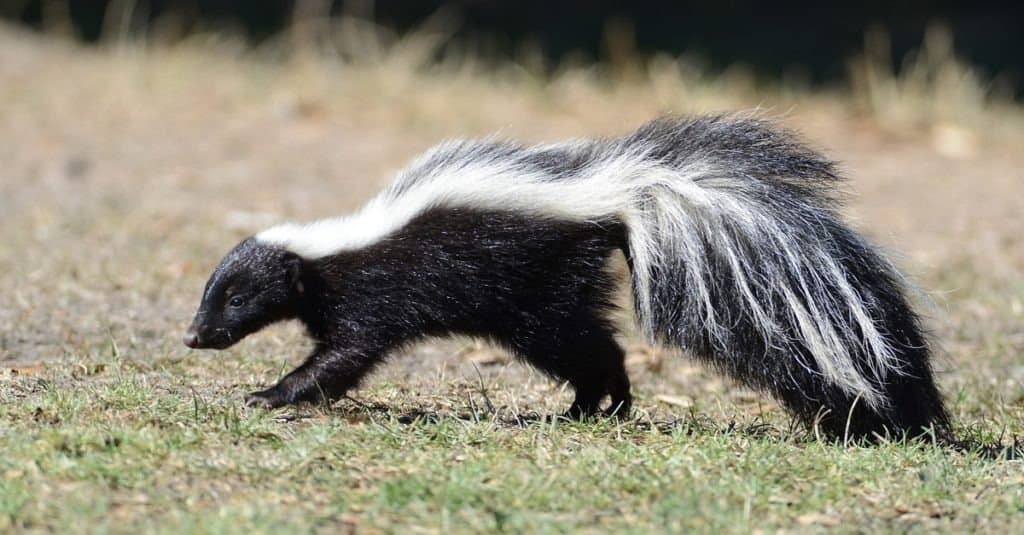Animals that possess venom, stingers, toxins, or any other undesirable trait, often feature bright coloration or contrasting colors that act as a warning that they are undesirable to eat.
Warning Coloration Meaning
Warning coloration, or aposematism, is a cautionary advertisement from animals to their potential prey. Animals that possess venom, stingers, toxins, or any other undesirable trait, often feature bright coloration or contrasting colors that act as a warning that they are undesirable to eat. Their colors can be bright orange, red, or yellow. Or they may feature black and white contrasting colors. Aposematism is the opposite of camouflage. But it benefits both parties.

The strawberry poison dart frog features warning coloration, alerting potential threats to is poisonous qualities.
©iStock.com/NTCo
Warning Coloration Example
Honey badgers feature black-and-white coloring that warns predators of their undesirable nature. Badgers are aggressive animals with sharp claws and teeth. And skunks are also black and white, but their coloring and foul smell keep predators at bay.
Bees are brightly colored, warning potential threats of their stingers. And poisonous frogs are often a bright color due to their toxicity.
Warning Coloration Functions
The main purpose of warning coloration is to prevent an attack. It may seem counterintuitive because they are easily detected, but through evolution, predators know that eating a brightly-colored animal can have devastating consequences. In fact, the brighter and more conspicuous an animal is, the more dangerous they are.
Red, orange, and yellow are often used because they stand out against dense green or brown foliage. This is also true of contrasting colors and patterns. Warning coloration is often accompanied by noxious odors, sounds, or aggressive behaviors, further warding off threats.

The contrasting black and white colors of the skunk effectively ward off many predators.
©Matt Knoth/Shutterstock.com
Warning Coloration Prevalence in Ecosystems
Warning coloration is very prevalent in the insect world. But is less common in vertebrates. However, you can find this trait most often in amphibians, reptiles, and fish. Some mammals, like skunks and badgers, also possess warning coloration. Even some plants can feature aposematism, warning animals to stay away. And animals that do eat these poisonous plants often acquire toxins that they can employ on others.
Marine animals have a more complicated relationship with warning coloration. Many aquatic species feature bright colors but have no defenses, such as coral and sponges. While you do see some aposematic qualities in the marine world, they are less prevalent and less effective.



